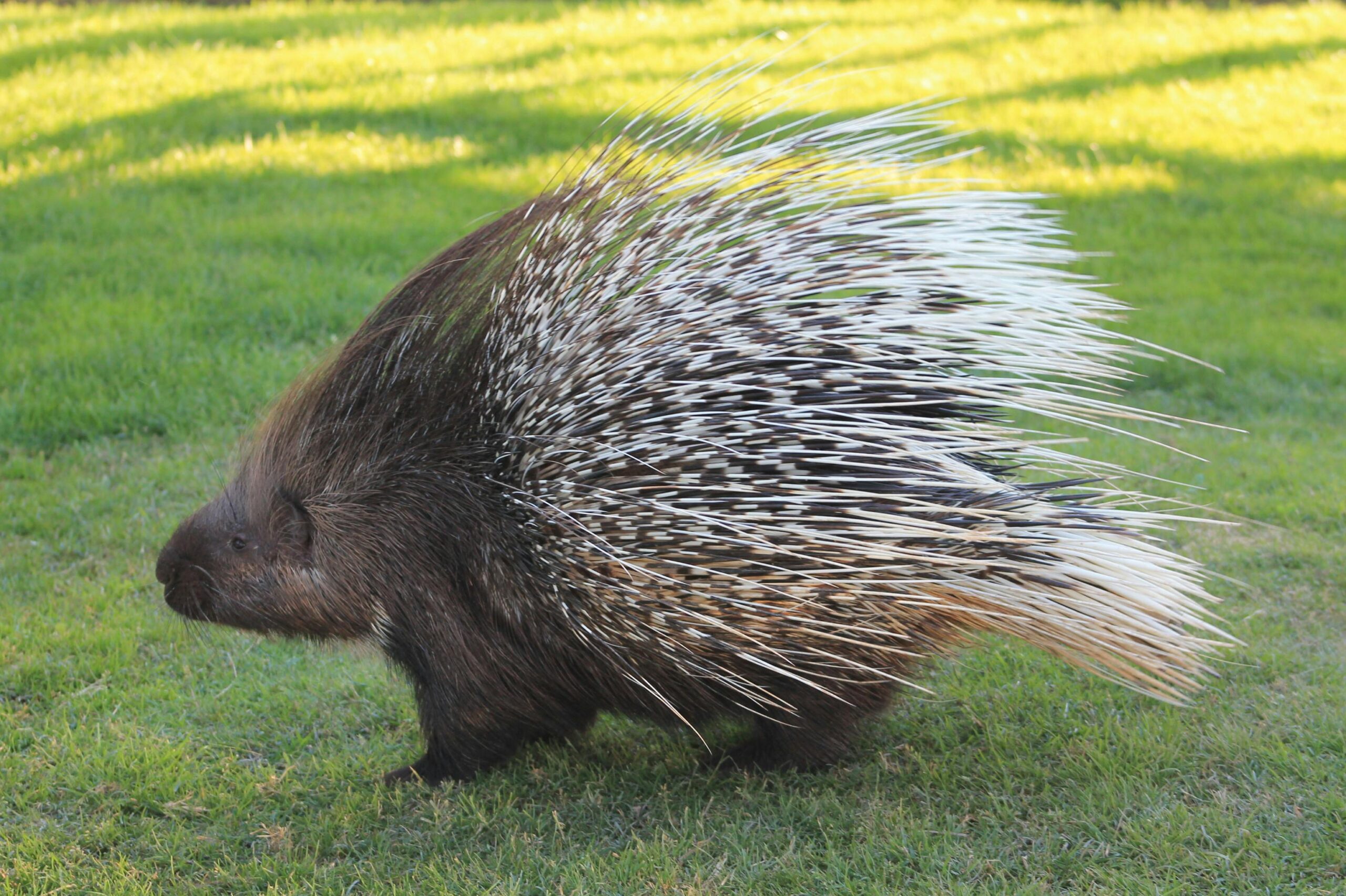I spotted a porcupine – what should I do?
by Ontario SPCA and Humane Society | Interesting Wildlife Fact Sheets | May 23, 2024

Known for their prickly exterior, porcupines are covered in a coat of quills they can erect when frightened. They also thrash their tails for protection. As nocturnal animals, porcupines are most active in the evening and night hours.
Porcupines are increasingly facing habitat hardships as forests filled with trees that they love to climb are being destroyed. Due to their slow nature and nocturnal habits, porcupines face the biggest threat of being victims in roadway encounters. With patience, understanding and caution, we can co-exist with the wild animals who share our backyards and cities.
Habitat
Porcupines are native to the coniferous and mixed-forest habitats of Canada. Besides forests, porcupines are very adaptable creatures and can be found in grasslands, desert shrub communities and even the tundra. They will often find a comfy tree perch and curl up there for days, looking like a big nest from the ground.
Diet
Porcupines are herbivores, eating a wide range of plant material. Their diet changes seasonally depending on the plants available at the time. They often find a cozy tree perch to eat on for days at a time, causing some of their food to fall to the ground, providing lots for other animals to use and eat.
Reproduction
Porcupines mate during the fall. Birth occurs 7 months after mating. The porcupine baby quickly learns to walk and climb, being weaned in 10 days. By that fall, the porcupine offspring leaves its mother.
Common questions:
Are porcupines pack-oriented creatures?
Porcupines are very solitary animals, enjoying no social life and will most often be spotted on their own. Porcupines may gather together for winter protection or where there is an abundance of food. When they gather, they are called a Prickle.
What species is a porcupine?
Porcupines belong to the rodent family. They are the second largest member of the rodent family found in Canada. Only the beaver is bigger!
Do porcupines shoot their quills?
While porcupines are covered in about 30,000 quills, they cannot throw or shoot their quills. Quills are very lightly attached to the animal, so they come off easily when a predator makes contact. They may also fall off by themselves when they lash their tails.
My animal has porcupine quills on them, how do I remove them?
Promptness is imperative when removing porcupine quills from your furry friend. When left too long, quills can burrow deeper or break off, making removal more difficult. Always take your animal to the veterinarian for removal as soon as possible. This ensures proper removal and provides a chance to check for infection. Do not try to remove quills yourself or cut quills before removing – it can make the quills difficult to grab onto and may splinter them into several broken pieces. Do not use your fingers to grab the quills as the tiny barbs can injure you.
If this information was helpful, please help us continue to educate about pet health and well-being by making a donation.
Categories
Testimonial
As an animal lover all the work you do
As an animal lover all the work you do to help ensure that every dog and cat can find their forever home that is filled with love is greatly appreciated.
